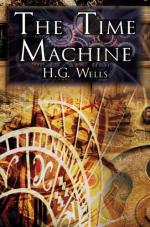|
This section contains 3,242 words (approx. 11 pages at 300 words per page) |

|
SOURCE: Eisenstein, Alex. “Very Early Wells: Origins of Some Major Physical Motifs in The Time Machine and The War of the Worlds.” Extrapolation 13 (1972): 119-26.
In the following essay, Eisenstein traces Wells's formulation of the Morlocks and their underground environs in The Time Machine to his childhood home, Atlas House.
In The Early H. G. Wells,1 Bernard Bergonzi treats the dualistic future world of The Time Machine mainly as an expression of the traditional mythic schism between Paradise and Perdition. To support his interpretation, he cites the contrasting imagery associated with the two distinct human habitats—and species—delineated in the story: descriptions of the upper realm and its people are predominately sunny and idyllic; those of the lower, somber and infernal.
Yet, beyond the demonic role he thus ascribes to the Morlocks, Professor Bergonzi further claims that these creatures “represent an exaggerated fear of the nineteenth century proletariat...
|
This section contains 3,242 words (approx. 11 pages at 300 words per page) |

|


